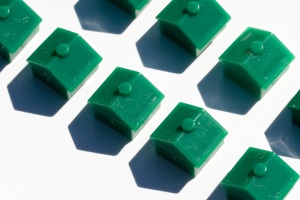The art of analyzing a home’s “comps”—once the exclusive domain of real estate agents and appraisers—is now open to everyone thanks to sites like Zillow and Redfin that display detailed data on sold homes.
The basic process is simple: Make a list of recently sold (within the last 3 months, ideally) homes similar to the one in question (size, floors, beds, baths, lot size, age, etc.) that are as close to the home of interest as possible. Knowledge of the neighborhood will be necessary to weed out homes that may be nearby, but are in a part of the neighborhood that is much nicer (e.g. – has amazing views) or much worse (e.g. – on a busy street) than where your potential home is located.
On Zillow, the map info bubble that pops up when you search for an address has a link called “Comps” with a little yellow house icon. Click that and you will be brought to a map of the area with recently-sold homes Zillow thinks are similar. On Redfin, there is a section of every home’s details page at the bottom titled “Nearby Similar Sales.” You can get a similar map of the homes listed there plus other comps in the area by clicking the “Map Similar Recent Sales” link at the bottom of that section.
With both of these sites, you’ll need to open each individual home that is returned as a comparable result to do a manual sanity check. Once you’ve got a decent list of homes (shoot for 5-10), compare their sale prices to the home you’re looking at, adjusting the sale price for any differences in features.
As an example, let’s say we’re looking at a hypothetical $190,000 home with 1,800 square feet on two stories, three bedrooms, 1.5 bathrooms, on a standard 5,000 square foot city lot. Nearby we find one similar home that sold for $270,000, one with half its square footage in the basement that sold for $170,000, one in really poor condition with ~20% less square footage that sold for $185,000, and a similar home that sold for $234,000. Given that the two homes that sold for less than the asking price on this home were either significantly smaller or in bad shape, $190,000 looks like it could be a decent deal.
In general, if the house you’re looking at is asking 15% or more less than what nearby comparable homes have sold for in the last three to six months, there’s a good chance that you’re looking at a nice below-market deal. Keep in mind that the moment you close on a house, you effectively lose 8% of the value since it will costs 3% to a buyer’s agent, 3% to your selling agent, and 2% in excise tax when you want to sell, so you want to have a buffer that’s around twice that amount at a minimum.
How To: Analyze a “Below-Market” Deal
- Introduction
- Comparable Sales
- Nearby Rents
- Historic Pricing
- Conclusion
Full disclosure: The Tim is employed by Redfin.
